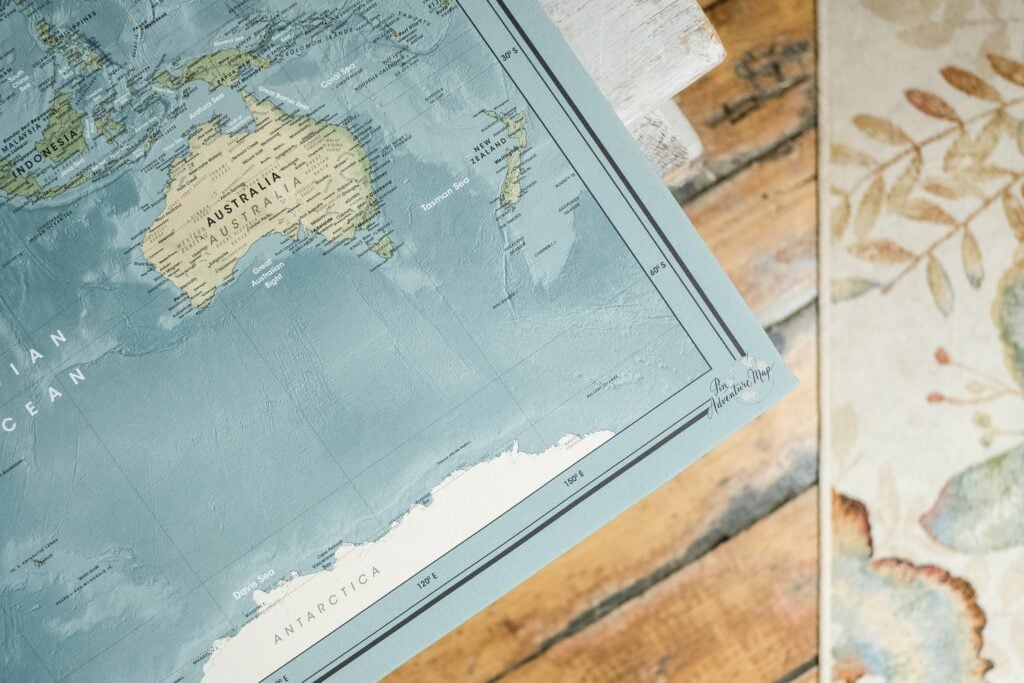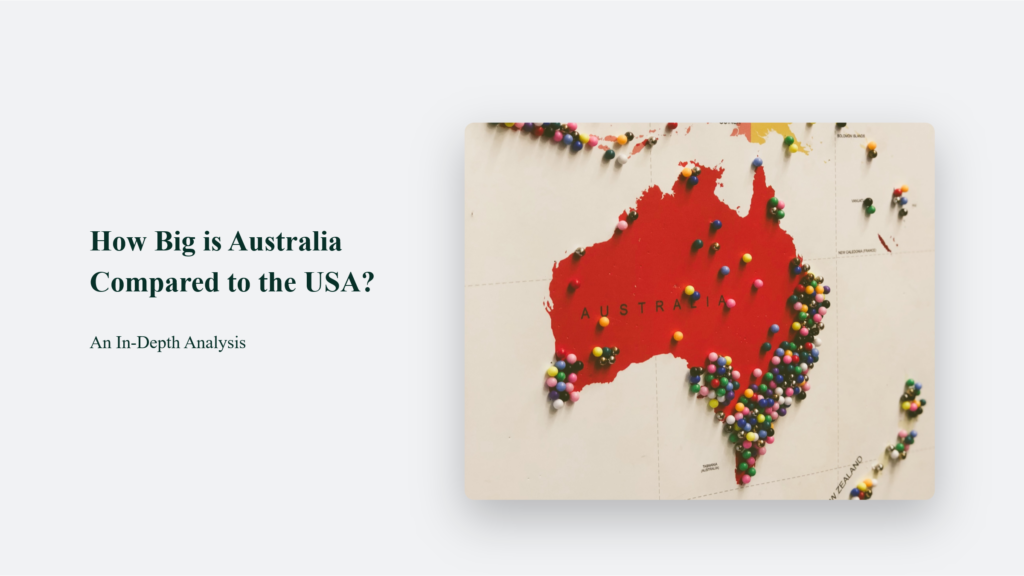![The ‘Giveaway Piggy Back Scam’ In Full Swing [2022]](https://www.cjco.com.au/wp-content/uploads/pexels-nataliya-vaitkevich-7172791-1-scaled-2-683x1024.jpg)

How Big is Australia Compared to the USA? An In-Depth Analysis

As Seen On
When we talk about size, Australia and the USA are like two giants on the world map. But just how big is Australia compared to the USA? This question intrigues many, and as it turns out, the answer is quite fascinating.

How Big is Australia Compared to the USA: A Comparison
When comparing the sheer size of Australia and the USA, it’s clear that both are among the largest countries in the world, but the USA holds a significant size advantage. Australia celebrated for its sprawling outback and picturesque coastlines, ranks as the world’s sixth-largest country. It covers an area of approximately 7.7 million square kilometres.
In contrast, the USA, known for its diverse geography, ranging from vast plains to towering mountain ranges, is the world’s third-largest country. It spans about 9.8 million square kilometres. This size difference means that the USA is around 1.28 times larger than Australia.
This comparison between the two countries highlights the vastness and diversity of each country’s landscapes. While Australia is renowned for its unique wildlife and natural landmarks like the Great Barrier Reef, the USA boasts various geographical features, from the Grand Canyon to the Great Lakes.
For more detailed insights into the geographical comparison of these two giants, you can explore various sources that provide in-depth analyses and statistics.
Population and Density: A Tale of Two Countries
When comparing the land sizes of Australia and the USA, one might think they are somewhat similar, but their population densities paint a completely different picture. The USA, with a bustling population exceeding 333 million people, is a hive of activity and urban sprawl, much like the crowded streets of Manhattan.
It contrasts sharply with Australia, where around 26 million people are spread across its vast landscape. Here, the population density is much lower, offering a sense of tranquility and space that can be likened to the serene expanses of the Australian Outback.
This stark contrast in population density between the two nations underscores the varied lifestyles and environments they offer, from the vibrant, busy cities of the USA to Australia’s calm, open spaces.
Environmental Echoes: Size and Its Implications
The vast sizes of Australia and the USA bring significant environmental responsibilities, each unique to their landscapes and ecosystems. Australia’s expansive wilderness areas, renowned for their unique biodiversity, face critical challenges. Protecting endangered species, such as the koala, is a major concern.
In the USA, environmental responsibilities are equally diverse and challenging. The country’s varied landscapes, from the Everglades in Florida to the vast wilderness of Yellowstone National Park, require thoughtful conservation policies. Key issues include combating climate change, managing air and water pollution, and preserving its natural wonders. The USA’s approach to environmental stewardship involves both protecting its vast natural landscapes and addressing the environmental impacts of its urban and industrial areas.
With their significant land masses, both countries play crucial roles in global environmental health. Their approaches to conservation and sustainability are vital in the fight against climate change and habitat destruction, underlining the importance of responsible environmental stewardship on a grand scale.
Trivia Time: Did You Know?
- Australia has 439 named rivers, with the Murray River being the longest at 2,375 kilometres. The USA, however, boasts over 250,000 rivers, with the Missouri River taking the crown at 3,768 kilometres.
- Speaking of universities, the USA is home to over 5,300, including world-renowned Harvard University. Australia has 43, with the Australian National University ranking as one of the top.
Frequently Asked Questions:
Is Australia bigger than the USA?
No, Australia is slightly smaller than the USA in terms of land area.
How does Australia’s population compare to the USA’s?
Australia’s population is significantly smaller than that of the USA.
What are the major climatic differences between the two countries?
Australia features climates like tropical, arid, and temperate, while the USA experiences a broader range, from tropical to arctic.
Conclusion: More Than Just Numbers
In summary, while Australia may be smaller in size compared to the USA, its vast, open spaces and lower population density present a unique charm. The USA, with its larger area and diverse landscapes, offers a different but equally captivating allure.
Konger
Up until working with Casey, we had only had poor to mediocre experiences outsourcing work to agencies. Casey & the team at CJ&CO are the exception to the rule.
Communication was beyond great, his understanding of our vision was phenomenal, and instead of needing babysitting like the other agencies we worked with, he was not only completely dependable but also gave us sound suggestions on how to get better results, at the risk of us not needing him for the initial job we requested (absolute gem).
This has truly been the first time we worked with someone outside of our business that quickly grasped our vision, and that I could completely forget about and would still deliver above expectations.
I honestly can't wait to work in many more projects together!
Disclaimer
*The information this blog provides is for general informational purposes only and is not intended as financial or professional advice. The information may not reflect current developments and may be changed or updated without notice. Any opinions expressed on this blog are the author’s own and do not necessarily reflect the views of the author’s employer or any other organization. You should not act or rely on any information contained in this blog without first seeking the advice of a professional. No representation or warranty, express or implied, is made as to the accuracy or completeness of the information contained in this blog. The author and affiliated parties assume no liability for any errors or omissions.

